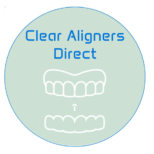Small Steps Now, Big Smiles Later: Why Early Orthodontic Treatment is Key for Your Child
For years, the common wisdom surrounding orthodontics was to simply wait until a child was around 12 years old before even considering braces. “Let all their adult teeth come in first,” was the mantra. But times, and thankfully, our understanding of dental development, have changed dramatically. Today, thanks to advancements in interceptive orthodontics, delaying treatment until adolescence can actually be a disservice to your child, potentially leading to more complex and costly problems down the line. Early orthodontics is very important.
This blog post will help to make it clear why starting orthodontic treatment early, often as young as 7 or 8, is now considered best practice and why clinging to the outdated notion of waiting until 12 is simply no longer relevant in modern dentistry.
The Old Way: Waiting Until 12 – A Reactive Approach
The traditional approach of waiting until around 12 years old was largely based on the idea that all permanent teeth needed to be erupted before any orthodontic intervention. This was a more reactive approach, addressing problems after they had fully manifested. While braces at 12 could certainly straighten teeth, it often meant dealing with fully developed malocclusions (misaligned bites) that could have been prevented or significantly minimized with earlier intervention.
Keywords: traditional orthodontics, braces at 12, reactive treatment, permanent teeth, malocclusion
The New Paradigm: The Power of Early Orthodontics
The game-changer has been the rise of interceptive orthodontics. This proactive approach focuses on identifying and addressing orthodontic issues early, while a child’s jaw and facial bones are still developing. Think of it as preventative dentistry, but for the alignment of teeth and jaws. This isn’t about putting braces on a seven-year-old for years; it’s about using strategic and often less invasive treatments to guide growth and development, making future, more comprehensive treatment (if needed) simpler, shorter, and often less expensive.
Keywords: interceptive orthodontics, early orthodontic treatment, proactive orthodontics, preventative orthodontics, jaw development, facial growth
Why Early Orthodontics Makes a World of Difference: Preventing Major Problems
So, why is starting early so crucial? Here are some key benefits of interceptive orthodontics:
- Guidance of Jaw Growth: During childhood, the jaws are still growing. Early treatment can harness this growth potential to correct jaw discrepancies, such as an overbite, underbite, or crossbite. This can prevent more severe jaw problems that might otherwise require surgery later in life.
- Creating Space for Erupting Teeth: Early intervention can help create space for crowded teeth to erupt properly. This can reduce the likelihood of impacted teeth and the need for extractions later on.
- Correcting Harmful Habits: Habits like thumb-sucking or tongue-thrusting can significantly impact jaw development and tooth alignment. Early treatment can address these habits and mitigate their negative effects.
- Improving Bite and Function: Early correction of bite problems can improve chewing efficiency, speech development, and even reduce the risk of temporomandibular joint (TMJ) disorders.
- Boosting Self-Confidence: Addressing visible dental issues early can positively impact a child’s self-esteem and confidence, preventing potential teasing or social anxieties related to their teeth.
- Simplifying Future Treatment: By addressing underlying skeletal and developmental issues early, interceptive orthodontics can make any future comprehensive orthodontic treatment (like braces in adolescence) less complex and shorter in duration.
Keywords: jaw discrepancies, overbite, underbite, crossbite, crowded teeth, impacted teeth, thumb-sucking, tongue-thrusting, bite problems, TMJ disorders, self-esteem, simplified treatment
What Does Early Orthodontics Look Like? It’s Not Always Braces!
It’s important to understand that early orthodontic treatment doesn’t automatically mean full braces at age seven! Interceptive orthodontics often utilizes appliances like:
- Expanders: To widen the upper jaw and create more space.
- Space Maintainers: To hold space for permanent teeth when baby teeth are lost prematurely.
- Partial Braces or Aligners: In some cases, limited braces or aligners might be used to address specific issues.
- Habit Appliances: To help break thumb-sucking or tongue-thrusting habits.
These appliances are often worn for a shorter period than full braces and are designed to guide growth and development, setting the stage for a healthier and straighter smile in the long run.
Keywords: expanders, space maintainers, partial braces, aligners, habit appliances, growth guidance
Is Your Child Ready for an Early Orthodontic Evaluation?
The American Association of Orthodontists recommends that children have their first orthodontic check-up by the age of 7. This doesn’t mean every 7-year-old needs treatment, but it allows an orthodontist to assess their dental development, identify any potential issues early, and advise on the best course of action.
Don’t wait until your child is 12 to think about orthodontics. Take a proactive approach and give them the gift of a healthy, confident smile by exploring the benefits of early interceptive orthodontics.
Keywords: orthodontic evaluation, children’s orthodontics, age 7 orthodontic check-up, proactive dental care, healthy smile
Early Intervention for a Lifetime of Smiles
The understanding of orthodontics has evolved significantly. Waiting until 12 is no longer the gold standard. Embracing early interceptive orthodontics allows us to guide your child’s dental development, prevent major problems, and pave the way for a healthier, more beautiful smile that will last a lifetime. By taking small steps now, you can ensure big smiles in the future.
Ready to give your child the best possible start for a healthy smile?
Schedule a consultation with an orthodontist today to discuss early orthodontic evaluation and learn more about interceptive orthodontics! What questions do you have about early orthodontic treatment for your child? Share them in the comments below!

